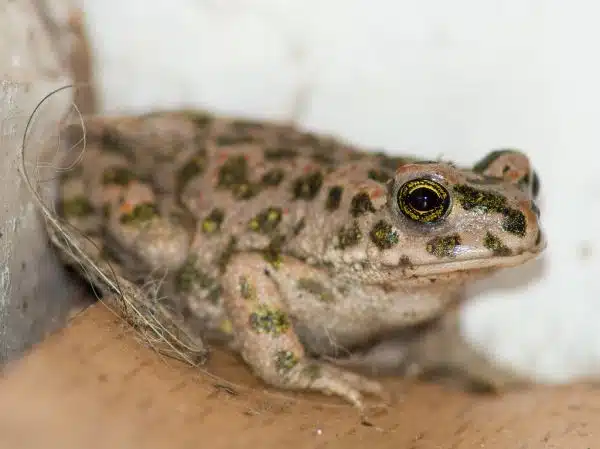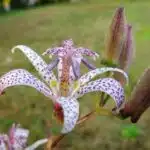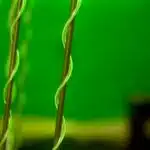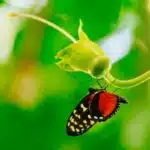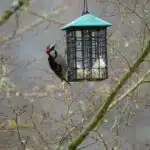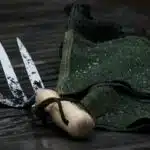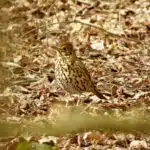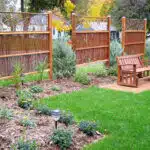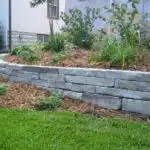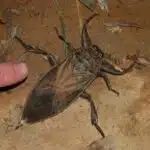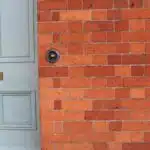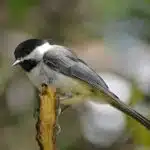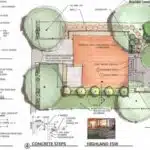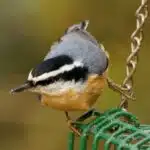Creating a welcoming habitat for wildlife in your garden can be a rewarding and fulfilling experience. Building a toad house is an excellent way to attract these beneficial creatures to your yard, as they provide natural pest control by feeding on insects such as slugs and snails. In addition, toads are fascinating animals that can add interest and diversity to your garden.
To make a successful toad house, it is important to consider the needs of these amphibians. They require shelter from predators, fluctuating temperatures, and excessive moisture or dryness. A well-designed toad house will offer protection from these environmental factors while providing a comfortable space for them to rest during the day and hunt at night. By following some simple steps, you can create an attractive and functional home that will benefit both the inhabitants and your garden’s ecosystem.
The Benefits Of Having A Toad House In Your Garden
In a garden, it’s common to see flowers, shrubs, and trees. But have you ever thought of adding a toad house as part of your landscape design? A toad house is not only a charming addition to your garden but also beneficial for the environment. These DIY structures can be made with simple materials and are an excellent way to promote ecology in your backyard.
Toads are known to be great helpers in controlling pests. They eat insects such as slugs, snails, and mosquitoes that can damage plants and carry diseases. By providing a safe haven for these amphibians, you’re creating an ecosystem that benefits both the environment and your garden. With the decline of natural habitats due to urbanization, building a toad house is an easy way to support local wildlife conservation efforts.
Toad houses are not only functional but also aesthetically pleasing. They can be made using different materials such as clay pots or hollow logs, which can be decorated according to your personal style. Additionally, building a toad house is an excellent educational opportunity for children who can learn about the importance of wildlife conservation and how every small effort counts towards preserving our planet’s ecosystems.
Understanding the needs of toads is crucial when building their shelter. In the following section, we’ll explore what makes an ideal habitat for these creatures and how you can create one in your own backyard without much effort.
Understanding The Needs Of Toads
Toads are fascinating creatures that play a significant role in our ecosystem. Understanding their behavior is essential for providing them with the best possible habitat. Toads are nocturnal and require shelter during the day, so it’s important to provide them with a suitable environment to hide in. They prefer damp environments, such as under rocks or logs, and love to burrow into loose soil.
Toads require specific habitat requirements to survive. They need access to food and water sources, which means that their habitat should be located near a water source such as a pond or stream. Additionally, they need an area with plenty of bugs since they feed on insects such as beetles and ants. Providing them with an ample food supply will ensure that they thrive in your garden.
To improve the chances of attracting toads into your garden, it’s crucial to create an environment that meets their needs. You can achieve this by providing them with a suitable hiding place using materials like rocks or old logs. Also, keep in mind that any chemicals used in your garden can harm these sensitive creatures, so it’s best to avoid using pesticides or herbicides when possible. By understanding their behaviors and habitat requirements, you will be able to create an ideal home for these wonderful creatures in your garden.
Moving forward, choosing the right location for your toad house is critical for ensuring its success and longevity.
Choosing The Right Location For Your Toad House
To truly understand the needs of toads, it is important to recognize their natural habitats. Toads thrive in areas with a lot of vegetation and moisture, making gardens and backyards ideal locations. However, not all spots in your garden are created equal when it comes to housing these amphibians. Choosing the right location for your toad house is crucial in ensuring its success.
One important factor to consider when selecting a location is shade. Toads prefer cooler temperatures and will seek out areas that provide relief from direct sunlight. Areas under trees or near shrubs are great options. Another key element to consider is proximity to water sources such as ponds or streams. Toads need access to water for breeding and hydration purposes, so having a nearby water source will increase the chances of them taking up residence in your garden.
When choosing the perfect spot for your toad house, keep in mind that you want it to be in an area that is safe from predators such as cats or birds. Try placing it near a fence or wall where these animals won’t be able to easily reach it. Once you have found the ideal location, it’s time to move on to selecting materials for your toad house.
Transitioning into the next section about selecting materials for your toad house: With the right location selected, now comes the fun part of deciding what materials will make up your new amphibian abode.
Selecting Materials For Your Toad House
When selecting materials for your toad house, it is important to consider using eco-friendly options that align with best practices for sustainability. By choosing materials that are sustainable and non-toxic, you can ensure that your toad house is not only a safe haven for these amphibians but also contributes to the overall health of your garden and local ecosystem.
One option for eco-friendly materials is reclaimed wood or salvaged building materials. Not only does this reduce waste and promote recycling, but it also adds a unique aesthetic to your toad house. Another sustainable choice is bamboo, a fast-growing plant that is durable and long-lasting. Bamboo is also easy to work with and can be shaped into different designs.
It’s also important to steer clear of any toxic materials such as pressure-treated wood or pesticides. These can harm not only the toads but also other wildlife in your garden. Instead, opt for natural finishes like linseed oil or beeswax which are both non-toxic and provide protection against weathering.
Selecting eco-friendly materials for your toad house not only supports sustainability efforts but also ensures a safe environment for the amphibians in your garden. By making conscious choices when it comes to the design and construction of your toad house, you can create a space that benefits both nature and yourself.
Transition: Now that you have selected the appropriate materials for your toad house, it’s time to begin planning its design.
Planning Your Toad House Design
Designing a toad house for your garden can be an exciting and creative project. Before you start building, it is important to plan out the design of your toad house. You may find design inspiration from pictures online or by walking around your garden and observing the natural environment. Once you have a basic idea of what you want your toad house to look like, it’s time to start thinking about creative modifications that will make it functional and attractive.
One effective way to design a toad house is by creating a 3 column and 5 row table in markdown format. In the first column, write down the essential features that every toad house should have, such as a waterproof roof, an entrance large enough for a toad, and proper ventilation. In the second column, jot down any additional features you want to add for aesthetic purposes, like painting or adding decorative elements. The third column can be used for notes on specific materials or dimensions.
Design inspiration can come from many sources, but it’s important not to get too caught up in making your toad house overly complicated or intricate. Remember that functionality is key when designing a home for your garden friends. With some creative modifications and careful planning, you’ll have a beautiful and functional addition to your garden in no time. In the next section, we’ll discuss how to build the foundation of your toad house without breaking the bank!
Building The Foundation Of Your Toad House
After planning the design of your toad house, it is time to start building the foundation. When it comes to constructing a toad house, there are a variety of materials you can use for the foundation. While wooden planks and bricks are common choices, there are also alternative materials you can consider such as recycled plastic or stone. Choosing sustainable construction materials not only benefits the environment but also ensures the longevity of your toad house.
When designing the foundation, it is important to keep in mind the unique needs of your garden’s inhabitants. Consider incorporating features such as drainage holes and an elevated base to protect against flooding. Additionally, adding a layer of eco-friendly options like cork or coconut coir can provide insulation for your toad house during colder months.
As with any construction project, safety should be a top priority when building your toad house’s foundation. Be sure to wear protective gear such as gloves and safety glasses when working with power tools or heavy materials. With careful planning and implementation of sustainable construction practices, you will soon have a sturdy foundation ready for the next step: constructing the walls of your toad house.
Constructing The Walls Of Your Toad House
Now that you have the foundation of your toad house set, it’s time to start building the walls. This is where the real fun begins! But before we get started, let’s take a moment to appreciate just how important a toad house can be for our little amphibious friends. Not only does it provide them with a safe place to call home, but it also helps control pests in your garden.
To begin constructing the walls, you will need to gather all of the necessary materials. This includes wood planks, nails or screws, and insulation material if desired. With these items in hand, start by measuring and cutting your wood planks according to your desired dimensions. Then nail or screw them together into a rectangular shape to form the basic structure of your toad house.
Next up is adding insulation! Adding insulation inside the walls of your toad house will help keep your little friends warm during colder months. To do this, simply cut your insulation material into small pieces and stuff them between the gaps in the planks. Once you’ve completed this step, it’s time for decorating the exterior! You can paint or stain your walls any color you like and even add some decorative elements like flowers or stones around the base of your toad house.
Now that you’ve got your walls built and decorated, it’s time for the next step: adding a roof to your toad house. With this addition, you’ll be one step closer towards completing your very own little oasis for these wonderful creatures!
Adding A Roof To Your Toad House
To ensure that your toad house is a safe and comfortable place for these amphibians, it is important to add a roof to protect them from the elements. The toad house roof design should be simple yet effective, and most importantly, weatherproof.
When designing your toad house roof, consider using materials that can withstand rain, wind, and harsh sunlight. Cedar shingles or metal roofing are excellent options as they are durable and long-lasting. Additionally, make sure the roof overhangs the entrance of the toad house slightly to prevent water from getting inside.
Weatherproofing your toad house is crucial in providing a safe shelter for these creatures. To keep moisture out of the toad house, apply a waterproof sealant on all exterior surfaces including the roof. This will also help prolong the lifespan of your toad house by preventing rot or decay caused by moisture damage.
Transition: Now that you have designed and weatherproofed your toad house roof, it’s time to focus on creating an entrance for your new amphibian friends.
Creating An Entrance For Your Toad House
With a sturdy roof in place, it’s now time to focus on designing the entrance of your toad house. The entrance should be wide enough for the toads to enter comfortably, but small enough to keep out predators. A good way to determine the appropriate size is by observing the size of the local toads in your area.
When designing your toad house entrance, consider adding some decorative elements that will make it more attractive and welcoming for the toads. For example, you can add some natural materials such as rocks or twigs around the entrance or paint it in vibrant colors that blend well with your garden theme. These small design touches not only make your habitat more visually appealing but also help attract more toads.
Here are some DIY toad habitat tips for creating an entrance for your toad house:
- Ensure that there is a clear path leading up to the entrance of your habitat
- This can be done by removing any obstructing plants or debris
- Keep the area around the entrance moist
- Toads prefer damp environments so keeping this area wet will help attract them
With these tips and tricks in mind, you’re now ready to design an inviting and safe entrance for your new amphibian friends. In our next section, we’ll explore some creative ways you can decorate your new home and further enhance its appeal.
Decorating Your Toad House
Adding color to a toad house can be achieved through the use of paints, stains, and other finishes. Creating shade and shelter for a toad house can be accomplished through the use of a canopy or awning. It is also possible to use natural materials like rocks and plants to provide protection from the sun and other elements. Finally, landscaping around a toad house can also be used to create a welcoming atmosphere for toads and other wildlife.
Adding Colorful Finishes
To add a pop of color to your toad house, consider using painting techniques that will make it stand out in your garden. One option is to paint the entire house with a bright color, such as yellow or blue. Alternatively, you could use stencils to create patterns or designs on the exterior. For a more whimsical touch, try using multiple colors and creating a polka dot or striped effect.
DIY embellishments are another great way to add some personality to your toad house. Consider adding small decorations such as flowers or mushrooms made out of clay or other materials. You could also attach faux foliage around the edges of the roof for a natural look. Whatever embellishments you choose, be sure they are securely attached so they don’t fall off during inclement weather.
When decorating your toad house, keep in mind that it should blend in with your garden rather than detract from it. Choose colors and decorations that complement the existing flora and fauna in your yard. With these tips in mind, you can create a beautiful and functional home for the toads in your garden.
Creating Shade And Shelter
Design inspiration and DIY tips are essential in decorating your toad house. However, it is also important to provide the necessary shade and shelter for the toads living in it. Toads are sensitive creatures that require an adequate environment, especially during hot summer months or if they live in areas with harsh weather conditions. Creating a shaded and protected area for them will not only enhance their quality of life but also help them feel safe.
There are several ways to create shade and shelter for your toad house. One way is by planting trees or shrubs around the area where the house is located. This will provide natural shade and cover from predators. Another option is to install a small umbrella or canopy over the house itself. This can be made out of fabric or other materials that are weather-resistant.
In addition, you can also add some DIY elements to create shelter for your little amphibious friends. For example, you could stack some rocks or bricks around the perimeter of the house, leaving a small entrance for the toads. This will create a cave-like structure that they can use as a hiding spot during inclement weather or when they need to rest. Whatever method you choose, make sure it provides enough protection without obstructing their movement in and out of the house.
Placing Your Toad House In The Garden
Garden design is all about creating a harmonious environment between plants and animals. When placing your toad house, it is important to consider the surrounding landscape. The ideal spot for your toad house should be in a shaded area that is close to vegetation and has access to water. This allows for easy access for the toads, ensuring that they will find a safe and comfortable home.
Toad habitat restoration is an important aspect of garden design. When placing your toad house, it’s also important to make sure that there are no predators nearby that could pose a threat to the toads. Additionally, you should avoid using pesticides or other chemicals in the area as this could harm both the toads and their food sources.
Placing your toad house in a suitable location will not only provide a home for these beneficial creatures but also contribute towards restoring their habitat. By following these simple guidelines, you can create an environment that is conducive to supporting biodiversity in your garden while maintaining balance in nature. In the next section, we will discuss how you can maintain your new addition and ensure its longevity as a haven for our little amphibian friends.
Maintaining Your Toad House
One of the most important aspects of having a toad house is maintaining it properly. Whether you have just built your toad house or bought one, there are certain things that you need to do to keep it clean and safe for your amphibian friends. For instance, cleaning requirements may vary depending on the material used in building the house. Wooden houses will require more frequent cleaning than those made from plastic or ceramic.
To clean your toad house, use a soft-bristled brush or cloth and mild soap solution. Avoid using harsh chemicals that may be harmful to your toads. Cleaning should be done regularly, especially during the breeding season when males may become territorial and aggressive towards other males.
Another important aspect of maintaining your toad house is protecting it from predators. Toads have many natural predators such as snakes, birds of prey, and small mammals like foxes and raccoons. To protect your toad house from these predators, place it in an area where it is not easily accessible. You can also add a protective barrier around the house using rocks or bricks.
- Keep the area around the house clear of debris.
- Provide a source of fresh water nearby for drinking and bathing.
- Plant native vegetation around the house to provide shade and shelter.
- Avoid using pesticides or chemicals near the house that could harm your toads.
- Monitor your toad population regularly for signs of disease or parasites.
Maintaining your toad house is crucial if you want to attract these fascinating creatures into your garden. By providing a clean and safe habitat with protection against predators, you are creating an environment where they can thrive. In the next section, we will discuss how you can attract more toads into your garden and encourage them to make use of their new home without any additional steps needed on your part.
Attracting Toads To Your Toad House
- To attract toads to their new home, it is important to provide them with an adequate food source.
- It is also important to create a habitat that is conducive to the toads’ needs, providing them with the right temperature, humidity, and other environmental conditions.
- A toad house should be properly positioned in the garden, doing its best to mimic the natural environment of a toad.
- Appropriately sized and located rocks, logs, and soil can help create the perfect habitat for these amphibians to call home.
Providing Food
Attracting toads to your garden can be a great way to control pests and promote a healthy ecosystem. To ensure that your toad house is occupied, it is important to provide food sources for these amphibians. Attracting insects such as crickets, beetles, and moths can be done by planting native plants and flowers that produce nectar or attract pollinators. Consider planting milkweed, coneflower, and goldenrod in your garden.
In addition to attracting insects with plants, providing water sources is also crucial for attracting toads. A shallow dish or bird bath filled with water can serve as a drinking spot for toads. It is important to keep the water fresh and clean by changing it regularly. Adding rocks or stones in the water can provide a basking spot for these amphibians, which they will appreciate.
Attracting insects and providing water sources are both important steps in ensuring that your toad house is occupied. By incorporating native plants and creating shallow pools of water in your garden, you are creating an environment that will attract these beneficial creatures. With patience and attention to detail, you can create a thriving ecosystem that benefits both you and the environment around you.
Creating A Habitat
Creating a habitat that is conducive to the needs of toads is crucial in attracting and keeping them in your garden. Habitat maintenance plays a significant role in ensuring that your toad house remains occupied. Understanding toad behavior is essential in creating an environment where they can thrive. Toads prefer areas with moist soil, plenty of hiding places, and protection from predators.
To create a suitable habitat for toads, it is important to consider their needs. One way to do this is by providing shelter such as rocks, logs, or leaf piles where they can hide during the day. These hiding places also provide protection from predators such as birds and snakes. Additionally, consider planting native grasses and plants that provide coverage while retaining moisture.
Finally, ensure that the habitat has adequate food sources for the toads. This can be achieved by planting insect-attracting plants as discussed earlier or introducing edible insects into the habitat. Creating a balanced ecosystem will promote healthy living conditions for both the toads and other organisms in your garden. By incorporating these elements into your garden design, you will create an environment that not only attracts but also sustains these beneficial creatures.
In conclusion, creating a suitable habitat for toads requires careful consideration of their needs such as providing hiding places, moist soil, and adequate food sources. By doing so, you are promoting a healthy ecosystem that benefits other organisms in your garden as well. With proper habitat maintenance and understanding of toad behavior, you can create an ideal environment that encourages these amphibians to take up residence in your garden.
Observing Toads In Your Garden
Toads play an important role in maintaining the balance of your garden’s ecology. They help control insect populations and provide a natural form of weed control by consuming small plants that grow near their habitat. Observing toads in your garden can be a fascinating experience, and building a toad house is the perfect way to encourage them to take up residence.
Toad behavior can vary depending on factors such as temperature, humidity, and availability of food. In general, they prefer moist environments with plenty of hiding places. They are most active during the night when temperatures are cooler and hunt for prey such as insects, spiders, and slugs. To encourage toads to use your new house, place it in a location where they are likely to find it easily.
Garden ecology benefits greatly from encouraging biodiversity. A thriving ecosystem relies on a variety of organisms interacting with each other in complex ways. By building a toad house, you are inviting these fascinating creatures into your garden. Not only will they help regulate pest populations, but observing their behavior can also provide hours of entertainment and education for children and adults alike. Remember that every creature has its place in the ecosystem, and by providing a home for toads, you are playing an important role in promoting biodiversity in your own backyard.
Encouraging Biodiversity In Your Garden With A Toad House
To those who believe that a garden is only for human pleasure, let me tell you otherwise. A garden can also serve as a home for other living creatures, including toads. By designing and building a toad house in your garden, you are not only adding an aesthetically pleasing element but also encouraging biodiversity in your outdoor space.
Toad house design can be simple or complex, depending on your preference. The essential requirements are providing shelter and moisture for the toads. You can use materials such as clay pots, rocks, and wood to create a cozy habitat for them. Choose a location in your garden that is shaded and away from direct sunlight. It is also best to place the house near vegetation to provide food sources for the toads.
Encouraging biodiversity in your garden through a toad house does not only benefit the toads; it creates a harmonious relationship between different species in your garden. Toads feed on insects, snails, and slugs that may harm your plants while attracting other wildlife such as birds and small mammals that prey on these harmful pests. In this way, you are creating a self-sustaining ecosystem where each organism plays its role in preserving nature’s balance.
By incorporating a toad house into your garden design, you are not only adding beauty but also promoting biodiversity in your outdoor space. This simple yet effective step towards creating an eco-friendly environment benefits not only wildlife but also humans who enjoy spending time outdoors surrounded by nature’s wonders. So why not take action today and build a new home for our amphibian friends?
Conclusion
The addition of a toad house in your garden can have tremendous benefits for both you and the environment. Toads are natural pest controllers, consuming insects such as slugs and mosquitoes that can cause damage to your plants and spread disease. By providing a safe haven for these creatures, you are not only improving the health of your garden but also promoting biodiversity in your local ecosystem.
To ensure the success of your toad house, it is important to understand the needs of these fascinating creatures. From selecting the right materials to choosing an optimal location, every aspect must be carefully considered. Once built, proper maintenance and strategic placement can attract more toads into your garden, allowing you to observe their unique behaviors firsthand.
Incorporating a toad house into your garden design is not only beneficial but also adds an element of charm and whimsy. Imagine watching as these little amphibians hop around your garden, performing their duties as natural pest controllers. By taking this simple step towards promoting wildlife in your backyard, you are contributing towards creating a more sustainable environment for generations to come. So why not make a home for these wonderful creatures today?
Image Credits
- “Close-up of a European Green toad in my house” by Ivan Radic (featured)

